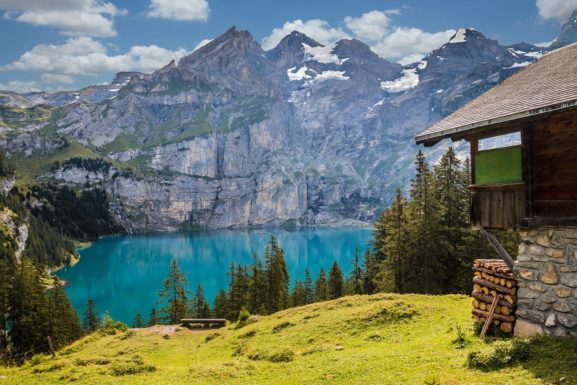How Did Punta Cana Get So Popular?
Punta Cana, located on the east coast of the Dominican Republic, has become internationally renowned as a beautiful tropical vacation paradise with luxurious, eco-chic, value-priced, accommodations. In fact, Punta Cana has now become the #1 tourist destination in the entire Caribbean — and this amazing transformation has occurred over just 28 years! This news has been reported in many of the popular travel magazines and travel websites. I want you to know that this stat is based on REAL data, not just marketing hype. The stats are gathered by the Caribbean Tourism Organization, a non-profit which keeps close tabs on 29 countries in the Caribbean Region.
Below, I will discuss this data in more detail. My discussion will center around the data released in 2010 as the Caribbean Tourism Organization has not yet published the December stats for 2011 so there is not yet a complete data set for that year. However, if you study the data available for the first 11 months of 2011, the overall trends remain the same.
The Dominican Republic received more non-resident airport arrivals than any other country in the Caribbean, easily beating out Cuba, the second most popular tourist destination. The following is a quick reference list for you to view the top 10 Caribbean destinations along with the total number reported for non-resident airport arrivals:
1. Dominican Republic – 4,124,543
2. Cuba – 2,531,745
3. Cancun Mexico – 2,106,485
4. Jamaica – 1,921,678
5. Puerto Rico – 1,369,814
6. The Bahamas – 1,368,053
7. Aruba – 825,451
8. The US Virgin Islands – 691,194
9. Martinique – 476,492
10. St. Maartin – 443,136
Now, let’s break these stats down even more into European travel, US American travel, and Canadian travel. Europeans pick the Dominican Republic overwhelmingly as their #1 favorite Caribbean vacation spot. Their next favorite is Cuba. The United States has a close 4 way race between Cancun Mexico, Jamaica, Puerto Rico, and the Dominican Republic. Cancun edges out the other 3 but the Dominican Republic gained 6.8% in just one year and this trend is continuing. Punta Cana is now the #1 destination within the Dominican Republic for US Americans, replacing Puerto Plata on the north coast, which used to be #1. Canadians also seem to really like the Dominican Republic, especially Punta Cana, choosing it as their second favorite Caribbean vacation spot after Cuba. Please note that United States residents are not allowed to travel to Cuba.
So, with this convincing data in mind, let me ask:
How did Punta Cana get so popular?
With many popular tourist destinations, it would be difficult to pin-point one specific thing that made the area soar in popularity. Not so with Punta Cana. On the Punta Cana coast, which stretches for about 39 miles from Bavaro in the north to Cap Cana in the south, there is one easily identifiable event that took place in 1984 that changed literally everything and completely transformed this region into the mega-popular tourist destination it is today.
Do I have your curiosity piqued yet? Keep reading…
Punta Cana is absolutely gorgeous. It offers expansive silky white sandy beaches with a warm sparkling blue sea lapping along its shoreline. It is so inviting it calls you in – some say it even “seduces” you. When you add to that the thick grove of coconut palm trees swaying in the tropical breeze along the entire coast in this region, you have the iconic Caribbean paradise seen on post-cards sent to those back home who weren’t lucky enough to go on the trip but who will surely wish they had.
However, before 1984 few people really knew about this tropical gem. It remained largely undiscovered by most world travelers until the construction of the Punta Cana International Airport (PUJ). In Spanish, the official language of the Dominican Republic, this international airport is called, “Aeropuerto Internacional de Punta Cana.”
You see, no matter how spectacular a place is, if you have no convenient and reasonably priced way to reach the area, it won’t be seen by many people. Before the Punta Cana International Airport was built, the tiny air strip that had been built in 1971 could not handle the large size jet planes. Furthermore, in order to get there from another country, you had to fly into Santa Domingo, the capital of the Dominican Republic, and then endure a 4 hour bumpy bus or taxi ride to Punta Cana. The unpaved road was narrow and full of gigantic potholes. The road would also wash out in heavy rains and motorized vehicles were sometimes held up by horse traffic, making the pace miserable for weary travelers wanting to get to their hotel.
The air traffic of the PUJ has grown by leaps and bounds and is on course this year (2012) to serve more than 4 million people! It now receives far more traffic than the next busiest airport in the capital of Santo Dominigo. There is no other privately funded airport in the world that even comes close to this degree of business success.
People come to Punta Cana from all over the world now. International airlines that serve the Punta Cana Airport are Air Canada, AirTran, American Airlines, British Airways, Continental, Delta, JetBlue, KLM, Spirit, United, US Airways, and Westjet. USA 300, recently defunct (as of January 30, 2012), was established by Apple Vacations and served PUJ for a long time as well. Canadian charter airlines to the Punta Cana Airport include Air Transat, Sunwig, Skyservice, and Canjet. They run during the cold bleak Canadian winters.
So, an area that began with very humble beginnings about 4 decades ago, now commonly provides beds for more than 70,000 people at one time. Punta Cana has definitely established itself as one of the top places world travelers think of going. And… there’s no end in sight for the growth of this area. The approximately 39 mile Punta Cana coast has essentially been a “gold rush” for the major hotel corporations, especially the Spanish owned ones, since the area was opened up by the international airport. Classy high rise resorts, perfectly sited to take advantage of the view, have sprung up almost overnight. The infrastructure has also vastly improved as money for big projects has poured in.
The Europeans and the Canadians seemed to have “discovered” Punta Cana before the US Americans did. However, over the last 10-15 years, the US Americans have been rapidly catching up. In fact, this has happened at such a quick rate, entire resorts have been built to cater specifically to the US Americans as the customs of the Europeans and the Americans sometimes clash a bit within the resorts, although some US Americans prefer the European ambiance.
US Americans and Canadians in the Eastern Standard Time Zone can depart on a direct flight in the morning and arrive in Punta Cana by mid-day with no jet lag as the time zones are the same, except during daylight savings time when it is only one hour different. Even a trip from the west coast of the United States or Canada is a relatively easy trip when you compare it to other equally exotic destinations.
The Punta Cana Airport also fits in nicely with the Dominican landscape and makes a nice first impression when tourists enter the country. It has an open-air design with a picturesque thatched roof made of palm fronds. All of the materials used to build the airport were brought in from local sources including palm, local wood, and native coral. This was a very intentional effort by Frank Rainieri and the other investors in Grupo Punta Cana who privately funded the airport. Since they were under-funded for a project of this magnitude, Frank Rainieri approached a Dominican architecture major at Pratt University. He agreed to do it at no charge to establish a name for himself. He has since become quite famous and has been paid well for other projects in the Dominican Republic.
Originally, Grupo Punta Cana attempted to get the Dominican Republic government to fund, or at least partially fund, the building of the international airport but after 8 years they found they had to fund it privately entirely on their own. They should be credited for their vision and persistence because a privately funded airport of this magnitude had never been built before. They did have the much needed approval and cooperation of the Dominican Republic government though or the project would have never gotten off the ground.
So, there you have it. The tourism success of the Punta Cana coast hinged on one thing: building an international airport capable of giving tourists easy and affordable access to this beautiful paradise. It took incredible vision and perseverance.


